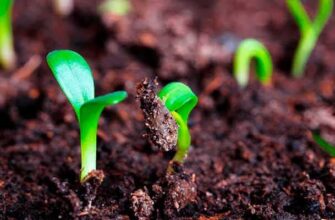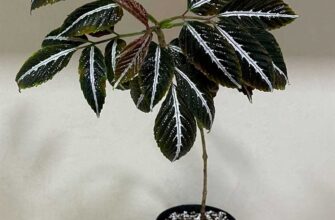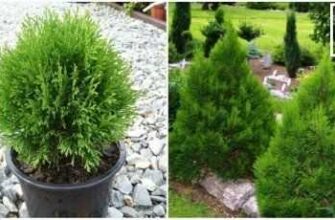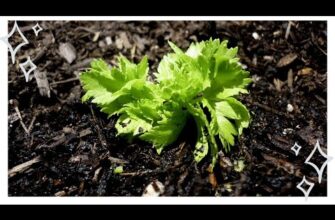- Подготовка почвы для выращивания клещевины
- Выбор места посадки
- Подготовка почвы
- Полив и уход
- Обрезка
- Выбор места для посадки клещевины
- Правильная посадка клещевины
- Удобрение клещевины: секреты и рекомендации
- Выбор удобрений
- Расчет и частота удобрений
- Способы удобрения
- Важные моменты
- Полив клещевины: основные правила и частота
- Основные вредители и болезни клещевины
- Вредители клещевины
- Болезни клещевины
- Профилактика и борьба с вредителями
- Правильная посадка
- Обрезка и удаление пораженных частей
- Удобрение и подкормка
- Размножение и выбор устойчивых сортов
- Регулярный полив и контроль влажности почвы
- Обрезка клещевины: правила и рекомендации
- Особенности размножения клещевины
- Уход за молодыми растениями клещевины
- Весенние и осенние работы по уходу за клещевиной
- Подводные камни при выращивании клещевины и их решение
- Проблема: неправильная обрезка
- Проблема: проблемы с размножением
- Проблема: неправильный уход в зимний период
- Проблема: неправильный полив
- Вопрос-ответ:
- Какой выбрать горшок для выращивания клещевины?
- Как часто нужно поливать клещевину?
- Как обеспечить подходящие условия освещения для клещевины?
- Как удобрять клещевину?
- Какой температурный режим требуется для клещевины?
- Видео:
- Клещевина. Растение-богатырь., с неоднозначной репутацией…

Клещевина, или валериана, является популярным растением среди садоводов. Ее красивые и ароматные цветы привлекают внимание и создают приятную атмосферу в саду. Однако, для успешного выращивания и ухода за клещевиной необходимо знать некоторые секреты.
Обрезка является одним из важных аспектов ухода за клещевиной. Она способствует формированию куста и стимулирует обильное цветение. Клещевина обрезается после цветения, удаляя увядшие цветы и сухие ветки. Это позволяет сохранить здоровье растения и поддерживать его декоративность.
Удобрение играет важную роль в процессе выращивания клещевины. Растение нуждается в регулярном подкормке для активного роста и развития. Для удобрения клещевины рекомендуется использовать органические удобрения, такие как компост или перегной. Они обеспечат растение необходимыми питательными веществами и способствуют его здоровому развитию.
Уход за клещевиной также включает зимнюю укрыватель. В холодный период года растение нужно защитить от низких температур и обильных осадков. Для этого можно использовать специальные укрывающие материалы, например агроволокно. Они создадут дополнительную защиту и помогут сохранить клещевину.
Полив является важным аспектом ухода за клещевиной. Растение нуждается в умеренном поливе, поскольку оно не переносит избыток влаги. Рекомендуется поливать растение после просыхания верхнего слоя почвы. Это позволит поддерживать оптимальное влажное состояние корневой системы клещевины.
Размножение клещевины можно осуществить различными способами, например черенкованием или делением куста. Выбор метода зависит от ваших предпочтений и опыта. В любом случае, для успешного размножения растения важно создать оптимальные условия, обеспечивая подходящую почву и регулярный уход.
Подготовка почвы для выращивания клещевины
Клещевина — это декоративное растение, которое размножается семенами и черенками. Для успешного выращивания и развития клещевины необходима хорошо подготовленная почва.
Выбор места посадки
Для выращивания клещевины выберите место с хорошим освещением, но защищенное от прямых солнечных лучей в сильные часы дня. Клещевина предпочитает рыхлую, плодородную почву с нейтральной или слабокислой реакцией.
Подготовка почвы
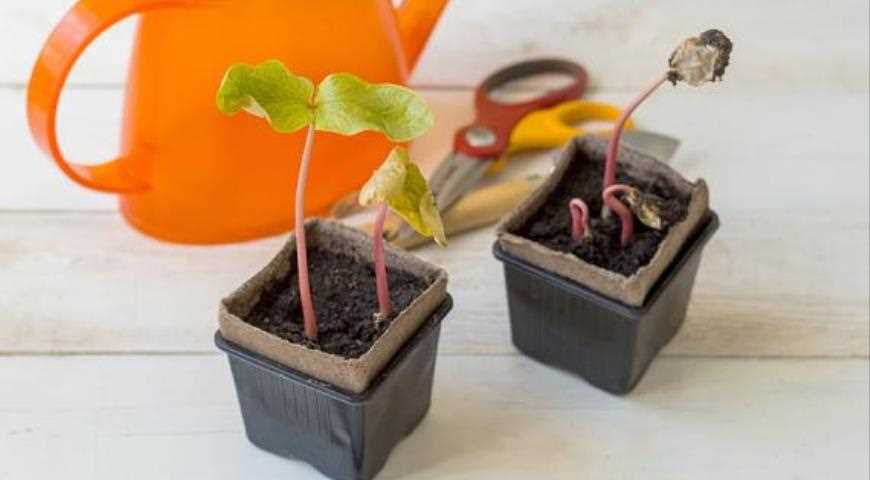
Перед посадкой проведите подготовку почвы. Раскопайте участок на глубину до 30 см и удалите все сорняки и камни. После этого внесите комплексное удобрение или перегной для обогащения почвы питательными веществами.
Также рекомендуется добавить песок или перлит в почву, чтобы улучшить ее воздухопроницаемость и дренажные свойства. Это особенно важно, если почва на участке тяжелая и склонна к застаиванию воды.
Полив и уход
После посадки клещевины обеспечьте регулярный полив. Растение не переносит засухи, поэтому почва должна быть всегда влажной, но не переувлажненной. При поливе старайтесь избегать попадания влаги на листья и цветы, чтобы предотвратить развитие грибковых заболеваний.
Для сохранения тепла и защиты от холода зимой, рекомендуется укрытие клещевины. Подложите слой мульчи или сухих листьев вокруг основы растения, чтобы сохранить тепло и предотвратить переохлаждение корневой системы.
Обрезка
Обрезка клещевины проводится весной перед началом активного роста растения. Удалите все сухие и поврежденные ветки, а также лишние отростки, чтобы сохранить компактную форму растения и стимулировать его развитие.
Важно помнить, что клещевина относится к быстрорастущим растениям, поэтому регулярный уход и обрезка помогут поддерживать его красивый внешний вид и здоровье.
Выбор места для посадки клещевины
При выборе места для посадки клещевины необходимо учесть несколько важных факторов. Во-первых, растение предпочитает солнечные места, поэтому необходимо выбрать место, которое получает достаточное количество солнечного света в течение дня.
Кроме того, клещевина требует хорошего дренирования почвы, чтобы избежать застоя влаги и гниения корней. Поэтому выбирайте место с хорошим стоком воды и избегайте посадки в низинах или затененных участках с повышенной влажностью.
Также необходимо подумать о возможности полива растения. Клещевина предпочитает умеренный полив, поэтому выберите место, где будет удобно поддерживать оптимальный режим полива.
Важно также учесть климатические особенности вашего региона. Если зимы в вашем регионе холодные и снежные, рекомендуется использовать зимний укрыватель для защиты клещевины от морозов. В противном случае, растение может замерзнуть и погибнуть.
Обратите внимание на состав почвы на участке. Клещевина предпочитает плодородные почвы, поэтому перед посадкой рекомендуется удобрить почву органическими или минеральными удобрениями.
Не забывайте также о регулярном уходе за клещевиной, включая обрезку и подкормку. Правильный уход поможет растению расти и развиваться, а также предотвратит возникновение болезней и вредителей.
Правильная посадка клещевины
Клещевина — это красивое и удивительное растение, которое может стать настоящей украшением вашего сада. Правильная посадка клещевины — важный этап, который определит ее дальнейшее развитие и процветание.
Выбор места: При выборе места для посадки клещевины учтите, что она предпочитает полутенистые места. Она будет хорошо расти под кроной деревьев или рядом с высокими заборами, которые создадут дополнительную защиту от яркого солнца.
Подготовка почвы: Перед посадкой клещевины рекомендуется обеспечить хорошую дренажную систему, чтобы избежать застаивания воды. Также необходимо удалить сорные травы и прорезать корни, чтобы обеспечить хороший доступ к питательным веществам.
Размножение: Клещевину можно размножать семенами или черенками. Семена можно посадить в грунт весной или осенью, предварительно проращив их. Черенками можно размножать весной или летом, отрезая часть стебля с несколькими почками и посадив его во влажный грунт.
Полив: Клещевина любит влажную почву, поэтому полив должен быть регулярным и достаточным. Влага не должна застаиваться, поэтому рекомендуется использовать метод капельного полива или поливать утром или вечером, чтобы вода успела впитаться до наступления ночи.
Удобрение: Клещевина нуждается в регулярном удобрении для хорошего роста и развития. Рекомендуется использовать органические удобрения, такие как перегной или компост. Удобрение следует проводить весной и осенью.
Зимняя укрыватель: В регионах с холодным климатом рекомендуется укрыть клещевину на зиму. Это можно сделать с помощью специальных материалов, таких как агроволокно или солома. Укрытие защитит растение от морозов и переохлаждения.
Удобрение клещевины: секреты и рекомендации
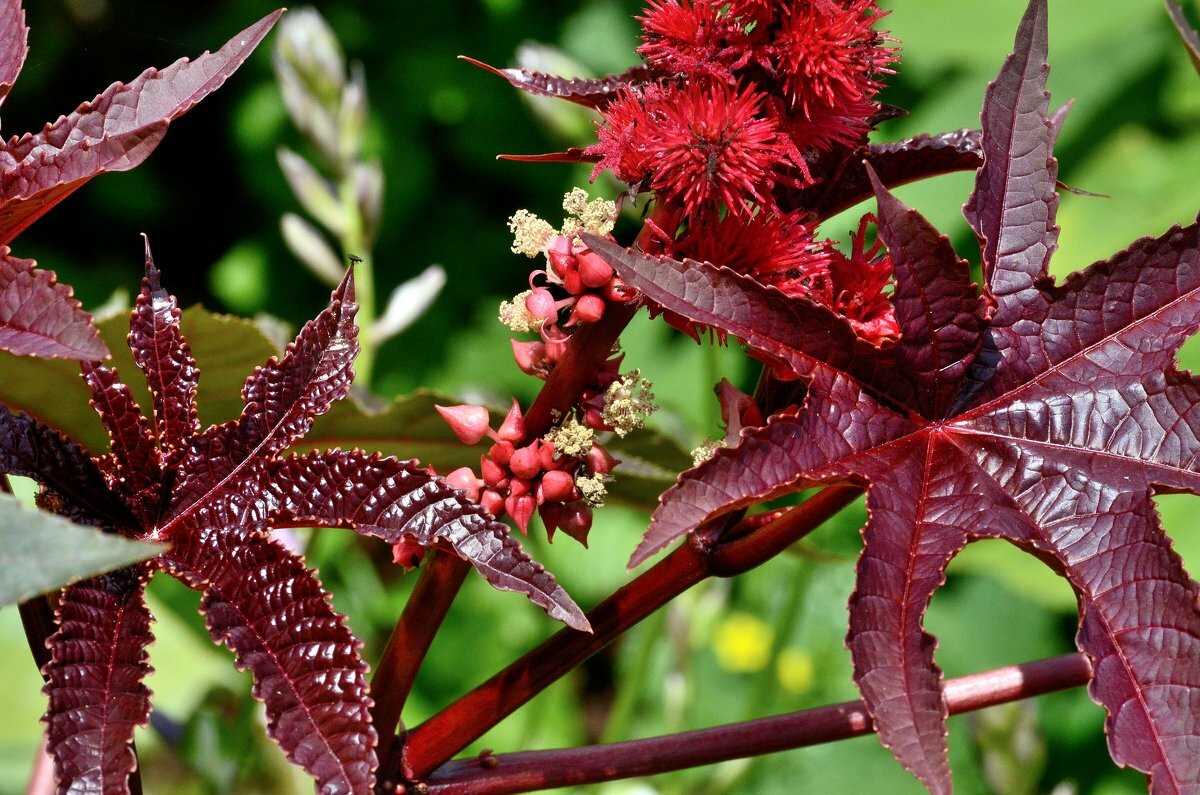
Выращивание клещевины – это увлекательный и полезный процесс, который требует определенных знаний и ухода. Одним из важных аспектов заботы о клещевине является правильное удобрение, которое позволяет достичь здорового и красивого растения.
Выбор удобрений
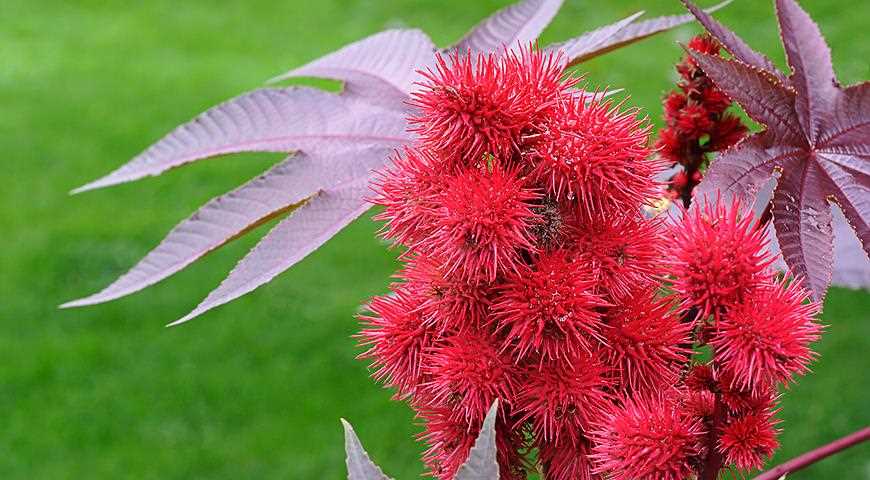
При выборе удобрений для клещевины рекомендуется ориентироваться на специальные комплексные удобрения, которые содержат все необходимые макро- и микроэлементы. Такие удобрения обеспечивают растение всем необходимым для его полноценного развития. Особое внимание следует уделить удобрениям, содержащим азот, фосфор и калий, так как они являются основными питательными веществами для клещевины.
Расчет и частота удобрений
Расчет дозы удобрений для клещевины зависит от ее возраста и состояния. Обычно, в период активного роста (весна-лето), растение требует более интенсивного удобрения, чем в период покоя (осень-зима). Для молодых растений рекомендуется удобрять каждые 2-3 недели, а для взрослых – каждый месяц. Не стоит перебарщивать с удобрениями, так как это может привести к перегрузке почвы и негативно сказаться на здоровье и развитии клещевины.
Способы удобрения
Удобрения для клещевины можно использовать различными способами. Один из самых распространенных – это внесение удобрений в грунт перед посадкой растения. В этом случае удобрения равномерно распределяются по всей площади вспашки. Также можно использовать органические удобрения, такие как компост или перегной, которые можно внести в почву вокруг растения в виде подкормки.
Для более эффективного удобрения клещевины можно использовать специальные удобрительные средства, которые наносятся непосредственно на листья растения. Такой способ позволяет быстро и точно доставить питательные вещества внутрь растения и повысить его иммунитет.
Важные моменты
Помимо удобрения, для успешного выращивания и ухода за клещевиной следует учесть несколько важных моментов. Регулярная обрезка растения помогает поддерживать его форму и стимулирует рост новых побегов. Зимняя укрывательная материя позволяет защитить клещевину от неблагоприятных погодных условий в холодный период года.
Для размножения клещевины можно использовать семена или черенки. Полив растения должен быть регулярным и умеренным, чтобы не перенапить корни и не вызвать гниение. Важно помнить, что каждое растение уникально, поэтому требует индивидуального подхода и ухода.
Полив клещевины: основные правила и частота
Клещевина — это декоративное растение, которое можно выращивать в своем саду или на даче. Она отличается своей неприхотливостью и легкостью в уходе. Однако, чтобы клещевина радовала вас своей красотой и здоровьем, необходимо обеспечить ей достаточное количество влаги.
Полив клещевины следует проводить регулярно, особенно в период активного роста. Однако, стоит помнить, что излишнее количество воды может привести к гниению корней и гибели растения. Поэтому регулярность полива должна согласовываться с состоянием почвы и погодными условиями.
Основное правило полива клещевины — умеренность. Размеры и количество поливов зависят от возраста растения, времени года и условий, в которых оно выращивается. Весной и летом, когда активно растут побеги и листья, полив клещевины следует увеличить, особенно в жаркие периоды.
Полив клещевины лучше всего проводить рано утром или поздно вечером, когда солнце уже не так активно. Это позволит избежать ожогов на листьях и укоренения на поверхности почвы. Важно помнить, что при поливе необходимо увлажнять корневую зону, а не листву.
Если вы выращиваете клещевину в горшке, то не забывайте проверять уровень влажности почвы. Если верхний слой земли высох, значит пришло время полить растение. Однако, стоит помнить, что переувлажнение также может привести к проблемам с корнями.
Основные вредители и болезни клещевины
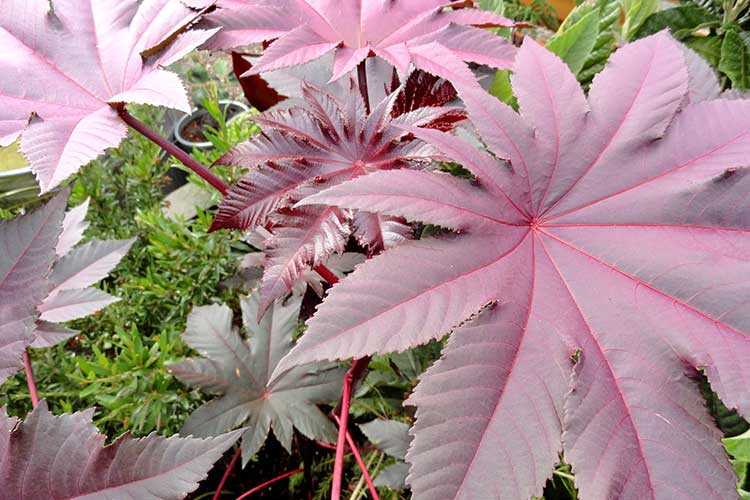
Клещевина – растение, которое относительно неприхотливо, однако оно все же может подвергаться атаке различных вредителей и заболеваний. Правильный уход и профилактические меры помогут избежать проблемных ситуаций и сохранить растение в здоровом состоянии.
Вредители клещевины
Один из основных вредителей клещевины – это клещи. Они могут поражать листья и стебли растения, питаясь и выделяя токсины, что приводит к желтизне и пожелтению листьев. Для борьбы с клещами рекомендуется регулярно осуществлять обрезку пораженных участков и проводить систематический полив, который помогает смыть клещей с растений.
Болезни клещевины
Одной из наиболее распространенных болезней клещевины является мучнистая роса. Она проявляется в виде белого налета на листьях растения, который приводит к их засыханию и искривлению. Для профилактики и борьбы с этой болезнью необходимо регулярно проводить обработку растений специальными препаратами. Также важным моментом является правильное удобрение и полив, чтобы укрепить иммунитет клещевины и предотвратить возникновение болезни.
Другой распространенной проблемой является поражение клещевины грибком черной ножки. Эта болезнь приводит к гибели корней растения, а в результате – к его увяданию и смерти. Чтобы предотвратить возникновение этой болезни, рекомендуется правильно подобрать почву для выращивания клещевины и обеспечить ей достаточное увлажнение. Также необходимо заботиться о правильном и регулярном поливе, чтобы избежать переувлажнения почвы, что может стать причиной появления грибка черной ножки.
Так стоп!!! Вы всё ещё не подписаны на наши каналы в Телеграмм и Дзен? Посмотрите: ТГ - (@historyfantasydetectivechat) и Дзен (https://dzen.ru/myshortsstorys)
Профилактика и борьба с вредителями
Клещевина является устойчивым к различным вредителям и болезням, однако некоторые вредители все же могут нанести ей вред. Для предотвращения поражения растения вредителями необходимо принимать несколько мер.
Правильная посадка
Чтобы уменьшить риск поражения клещевины вредителями, необходимо выбирать здоровые саженцы и правильно провести посадку. Рекомендуется выбирать место с хорошим освещением и дренировкой почвы. Также важно соблюдать правильное расстояние между растениями, чтобы обеспечить хорошую циркуляцию воздуха.
Обрезка и удаление пораженных частей
Регулярная обрезка и удаление пораженных частей растения помогут снизить риск размножения вредителей. При обнаружении пораженных листьев или побегов следует немедленно удалить их и уничтожить. Также рекомендуется проводить формировочную обрезку, чтобы поддерживать растение в хорошей форме и улучшать доступность для проветривания.
Удобрение и подкормка

Регулярное удобрение и подкормка клещевины помогут укрепить ее иммунную систему и сделать ее более устойчивой к вредителям. Рекомендуется использовать органические удобрения, такие как компост или перегной, которые снабдят растение необходимыми питательными веществами.
Размножение и выбор устойчивых сортов
При размножении клещевины следует выбирать сорта, которые известны своей устойчивостью к вредителям. Также рекомендуется размножать растение через черенки или деление куста, чтобы увеличить его устойчивость к вредителям.
Регулярный полив и контроль влажности почвы
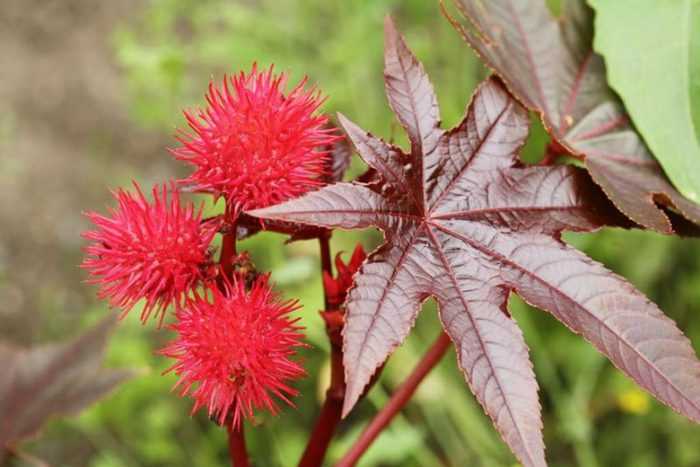
Регулярный полив поможет поддерживать оптимальную влажность почвы и избегать пересыхания или переувлажнения, что может привести к увеличению риска поражения клещевины вредителями. Важно также контролировать влажность почвы и воздуха в помещении, где выращивается растение, чтобы избежать условий, благоприятных для размножения вредителей.
Обрезка клещевины: правила и рекомендации
Клещевина — декоративное растение, которое пользуется популярностью среди садоводов и любителей цветов. Для того чтобы клещевина радовала глаз своими красочными цветами и пышной листвой, необходимо проводить ежегодную обрезку.
Обрезка клещевины проводится в конце зимы или в начале весны, до начала активного роста растения. Во время обрезки удаляются сухие, поврежденные и замороженные ветки. Также рекомендуется укорачивать слишком длинные побеги, чтобы стимулировать разветвление.
При обрезке клещевины необходимо использовать острый и чистый инструмент, чтобы избежать повреждения растения. После обрезки обязательно обрабатываются порезы антисептическим средством для предотвращения возникновения инфекций.
Обрезка клещевины также может проводиться для формирования кроны и поддержания желаемой формы растения. В этом случае обрезка проводится с учетом желаемой геометрии и размеров растения.
После обрезки клещевина нуждается в удобрении для восстановления и стимуляции роста. Рекомендуется использовать специальные удобрения для клещевины, которые содержат все необходимые питательные вещества.
Особенности размножения клещевины
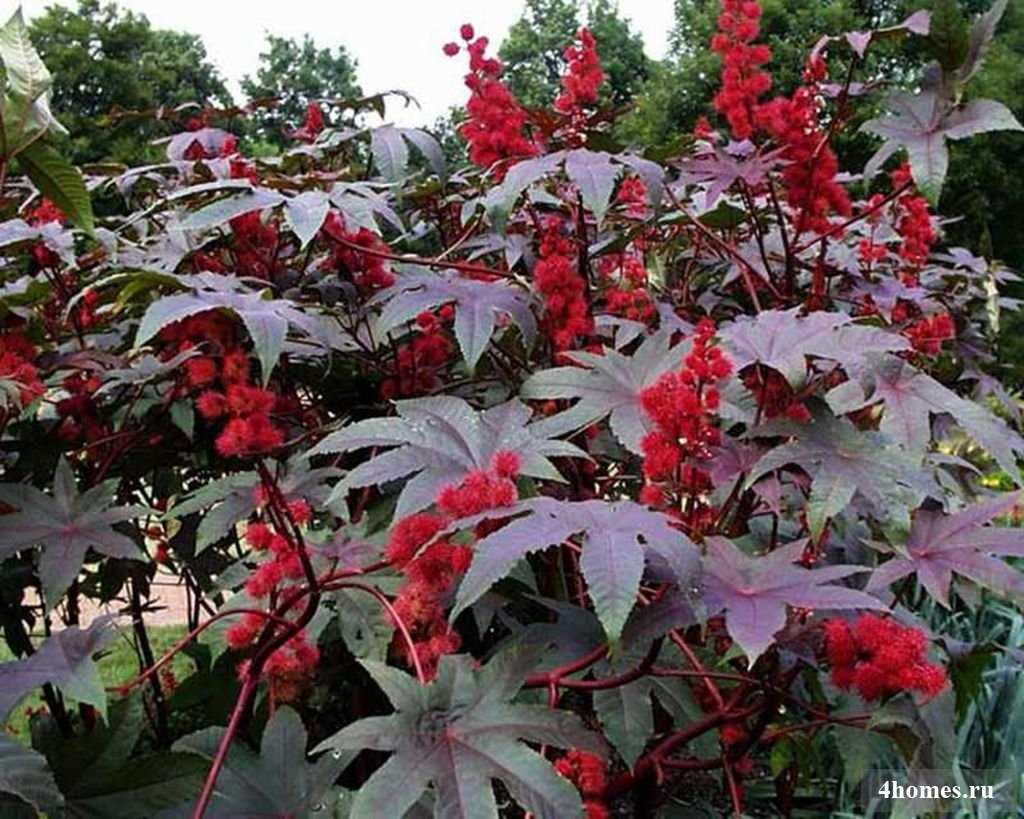
Выращивание и уход
Для успешного размножения клещевины необходимо обеспечить правильное выращивание и уход. Посадка молодых растений проводится в хорошо увлажненные почвы, богатые питательными веществами. Полив растений следует проводить регулярно, особенно в период активного роста. При засушливой погоде полив необходимо повышать.
Обрезка и укрыватель
Для стимуляции размножения и поддержания компактной формы растений рекомендуется проводить обрезку. Она способствует формированию новых побегов и укреплению корневой системы. Зимнюю укрыватель следует устанавливать перед наступлением холодов, чтобы защитить растение от низких температур и морозов.
Размножение и удобрение
Клещевина размножается семенами или черенками. Семена следует посеять в грунт весной или осенью. Черенки можно посадить в специально подготовленную почву на протяжении всего сезона. Для лучшего развития и роста растений, рекомендуется регулярно удобрять их органическими и минеральными удобрениями.
Уход за молодыми растениями клещевины
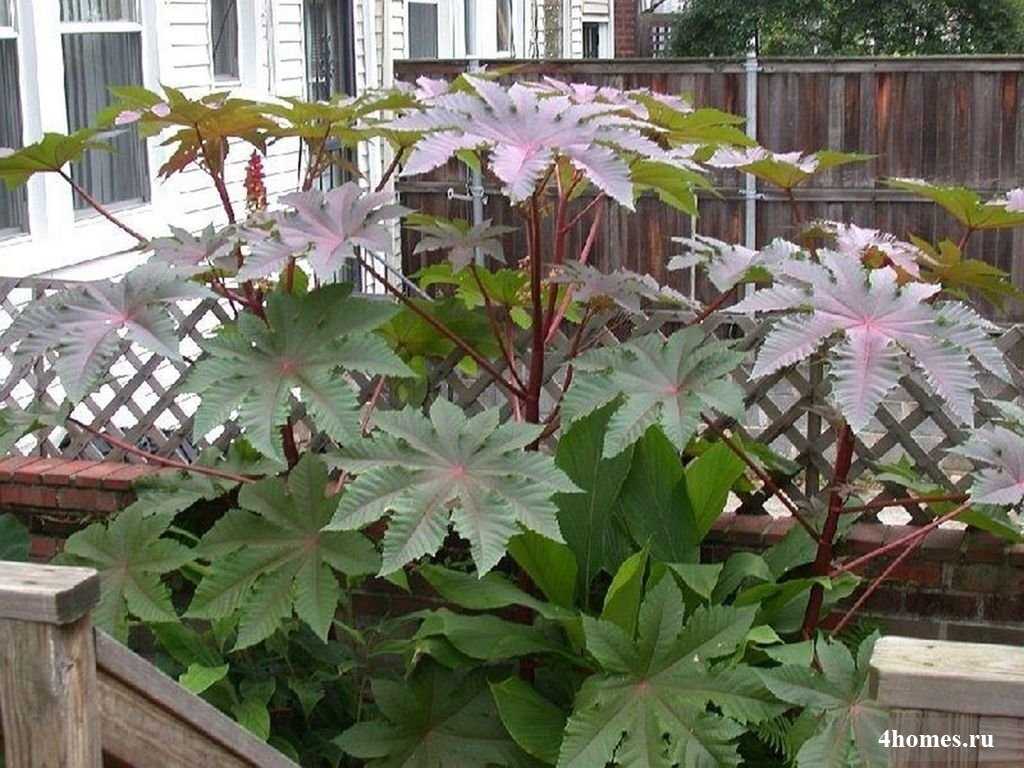
Посадка и размножение клещевины является первым шагом в процессе выращивания этого растения. Рекомендуется выбрать хорошо освещенное место для посадки, где земля будет хорошо дренированной.
Важно обеспечить зимнюю укрыватель для молодых растений клещевины, чтобы защитить их от холода и морозов. Для этого можно использовать сухие листья или солому, которые накрываются сверху специальным материалом.
Уход за молодыми растениями клещевины включает регулярное поливание, особенно в период сухой погоды, чтобы сохранить почву во влажном состоянии. Рекомендуется использовать органические удобрения для подкормки растений и обеспечения их правильного роста.
Обрезка молодых растений клещевины является неотъемлемой частью ухода за ними. Необходимо удалить поврежденные, больные или сухие ветви, чтобы способствовать правильному формированию куста.
Выращивание и уход за молодыми растениями клещевины требует внимания и заботы, но при правильном подходе можно получить красивое и здоровое растение, которое будет радовать глаз своей красотой.
Весенние и осенние работы по уходу за клещевиной
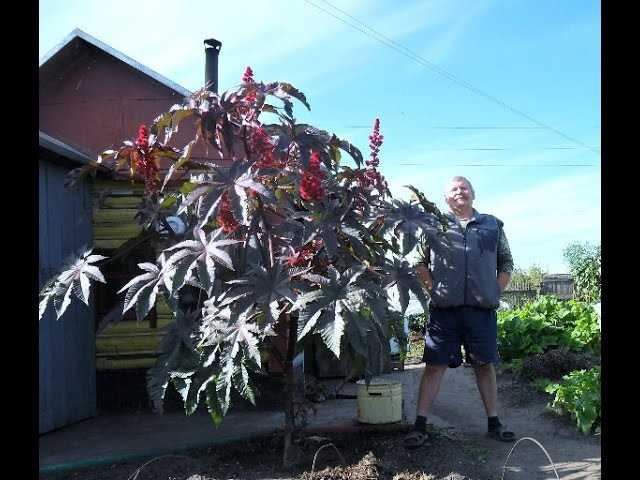
Клещевина — это кустарник, который отлично растет и размножается в условиях средней полосы России. Однако, чтобы он выглядел здоровым и красивым, требуется правильный уход.
Весной необходимо провести такие работы:
- Посадка новых растений. Для этого выбираются солнечные места с плодородной почвой.
- Удобрение. Клещевина требует регулярного подкорма органическими удобрениями, которые вносятся в почву вокруг растения.
- Обрезка. Весной проводится санитарная и формирующая обрезка. Удаляются поврежденные и засохшие ветки, а также проводится формирование куста.
Осенью нужно уделить внимание следующим моментам:
- Уход за зимняя укрывателем. Клещевина нуждается в защите от холода, поэтому кусты покрываются специальным материалом, чтобы сохранить тепло.
- Обрезка. Осенью проводится санитарная обрезка, удаляются поврежденные и засохшие ветки, чтобы предотвратить развитие болезней и вредителей.
- Удобрение. В осенний период под клещевину вносится минеральное удобрение, чтобы растение получило необходимые питательные вещества перед зимой.
Правильный уход весной и осенью обеспечит здоровый рост и развитие клещевины, а также увеличит ее цветение и плодоношение.
Подводные камни при выращивании клещевины и их решение

Клещевина — это красивое и неприхотливое растение, которое станет отличным украшением вашего сада или дома. Однако, при выращивании клещевины можно столкнуться с некоторыми проблемами, которые могут затруднить процесс ухода за ней.
Проблема: неправильная обрезка
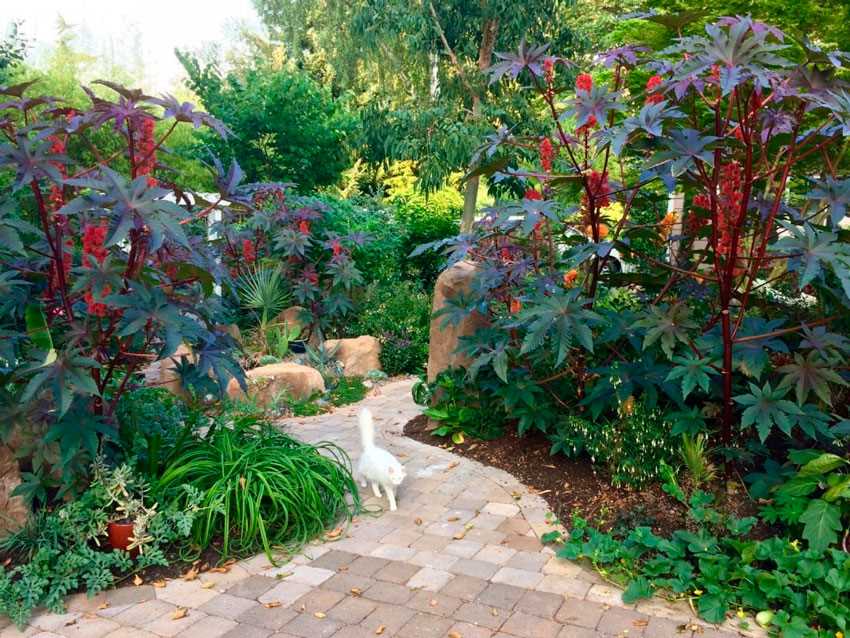
Обрезка клещевины играет важную роль в формировании ее кроны и поддержании здорового состояния растения. Однако, неправильная обрезка может привести к повреждению клещевины и ослаблению ее иммунной системы.
Решение: перед началом обрезки необходимо изучить основные правила этого процесса и использовать острое и чистое секатор. Обрезка клещевины проводится весной, до начала активного роста, удаляя поврежденные и сухие ветви, а также формируя желаемую форму растения.
Проблема: проблемы с размножением
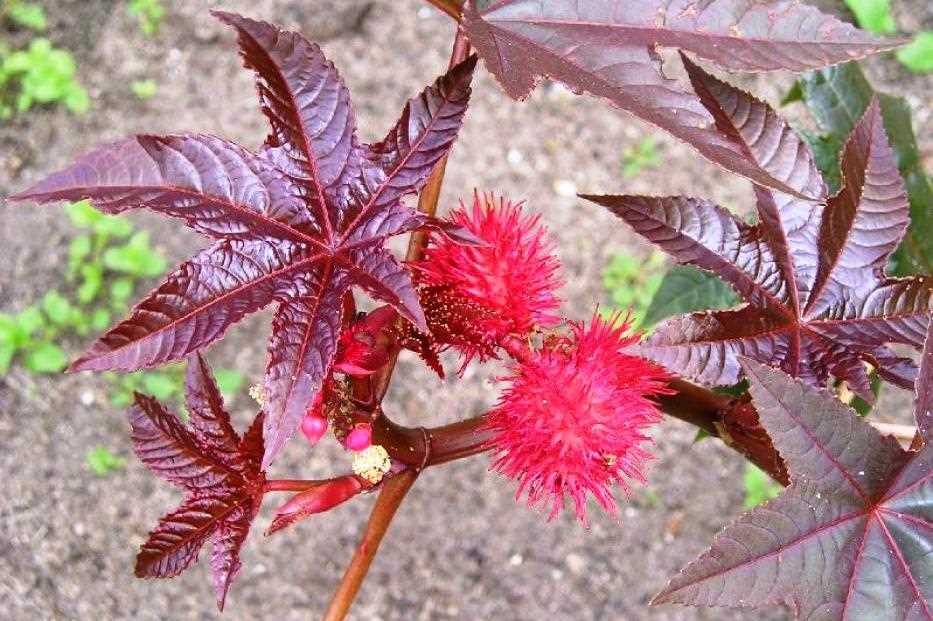
Размножение клещевины — одна из важных задач при выращивании этого растения. Однако, некорректное проведение процесса может привести к низкой приживаемости и слабым рассадам.
Решение: для успешного размножения клещевины необходимо выбирать здоровые и сильные растения-родители, проводить процесс размножения с использованием специальной почвы и правильно ухаживать за молодыми растениями, обеспечивая им оптимальные условия для роста.
Проблема: неправильный уход в зимний период
Зимняя укрыватель — неотъемлемая часть ухода за клещевиной в холодный период года. Однако, некорректное использование зимнего укрывателя может привести к повреждению растения и его гибели.
Решение: перед укрыванием клещевины необходимо изучить рекомендации по выбору и использованию зимнего укрывателя, а также следить за температурными условиями и вовремя проводить необходимые мероприятия, чтобы предотвратить замерзание и повреждение растения.
Проблема: неправильный полив
Полив — важный аспект ухода за клещевиной, который может стать источником проблем, если его проводить неправильно.
Решение: перед поливом необходимо изучить особенности полива клещевины и следовать рекомендациям, учитывая ее потребности в воде и предотвращая переувлажнение или пересушивание почвы.
Вопрос-ответ:
Какой выбрать горшок для выращивания клещевины?
Для выращивания клещевины лучше всего выбрать горшок из глины или керамики. Они хорошо пропускают воздух и влагу, что позволяет корням растения дышать. Горшок должен быть достаточно глубоким и широким, чтобы обеспечить достаточное пространство для развития корней.
Как часто нужно поливать клещевину?
Частота полива клещевины зависит от условий окружающей среды и времени года. В теплый сезон (весна-лето) растение нужно поливать 2-3 раза в неделю, поддерживая постоянную влажность грунта. В холодный сезон (осень-зима) полив нужно уменьшить до 1-2 раз в неделю, чтобы избежать переувлажнения корней.
Как обеспечить подходящие условия освещения для клещевины?
Клещевина предпочитает яркий, но рассеянный свет. Она не переносит прямые солнечные лучи, которые могут привести к ожогам листьев. Разместите растение на окне с восточной или западной стороны, чтобы оно получало утреннее или вечернее солнце. Если окно смотрит на юг, рекомендуется затенить растение от прямых лучей с помощью штор или решетки.
Как удобрять клещевину?
Для удобрения клещевины можно использовать универсальные жидкие или гранулированные удобрения для комнатных растений. Рекомендуется удобрять растение в период активного роста (весна-лето) 1 раз в месяц. При этом следует соблюдать дозировку, указанную на упаковке удобрения. Важно не переусердствовать с удобрениями, чтобы не вызвать перегрузку питательными веществами.
Какой температурный режим требуется для клещевины?
Клещевина предпочитает теплый температурный режим. Оптимальная температура для роста и развития растения составляет 20-25 градусов Цельсия днем и 15-20 градусов Цельсия ночью. Важно избегать резких перепадов температуры и сквозняков, которые могут повредить растение.


